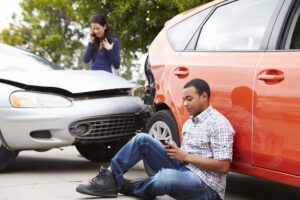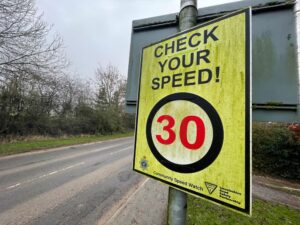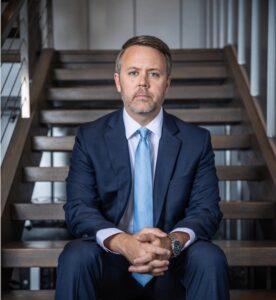A car accident is a stressful experience that can happen to anyone. It can be a traumatic and life-changing event that may leave lasting emotional and physical scars.
As much as you try to avoid it, there are times when automobile crashes are just inevitable. However, knowing the different types of collisions can help understand how they occur and how you can prevent them.
When an accident occurs, you do not have to face the aftermath alone. A skilled Marietta car accident lawyer can support you when you feel overwhelmed by the fallout from your car crash. They will guide you through filing a claim and seeking financial compensation for your past and future medical expenses, lost income, and other damages.
Common Car Accident Types
Car accidents are experiences most people would rather avoid at all costs. Unfortunately, it doesn’t matter how careful you are behind the wheel or how many years of driving experience you have – accidents can still happen. The fact is, there are many different types of car accidents, each with varying levels of severity.
Rear-End Collisions
Rear-end collisions are one of the most common types of accidents. They occur when the front of one vehicle collides with the back of another, often in heavy traffic, where sudden stops are common. The consequences of a rear-end collision can vary from minor damage to severe injuries or, in the worst-case scenario, even death.
Head-On Collisions
These collisions happen when two or more vehicles hit each other front-to-front. This type of accident is often the deadliest, as the force of impact is concentrated on the front of both cars. Head-on collisions account for about 14 percent of all traffic fatalities in the United States. These accidents can occur due to distracted driving, driving under the influence, or negligent driving.
Single-Vehicle Accidents
As the name implies, this accident occurs when a car crashes into a fixed object like a tree, wall, or pole and involves only one vehicle. Excessive speed, poor weather conditions, or distracted driving often cause this type of accident. Single-vehicle accidents can result in severe injuries, property damage, and, in some cases, fatalities.
Multi-Vehicle Accidents
Multi-vehicle accidents, or pile-ups, happen when three or more vehicles collide. This type of accident often occurs on highways during rush hour or in areas with high traffic density. Multi-vehicle accidents can cause significant damage, severe injuries, and deaths, especially when they occur at intersections.
Rollover Accidents
Rollover accidents occur when a vehicle rolls over onto its side or roof. Rollovers may occur due to speeding, abrupt turns, or unstable road conditions. Rollover accidents can result in severe injuries and fatalities, especially if vehicle occupants are not wearing seat belts.
Side-Impact Collisions
Also known as T-bone accidents, this type of accident happens when one car crashes into the side of another car. This often occurs at intersections and is usually a result of a driver’s failure to stop at a red light or stop sign.
Side-impact collisions often involve a powerful force hitting the side of the car where the driver or passenger is seated.
Sideswipe Accidents
These types of accidents occur when the sides of two vehicles collide while traveling in the same direction. They typically happen when someone tries to change lanes without properly checking their blind spot.
Sideswipe accidents mostly result in damage to the cars involved and can lead to whiplash injuries, especially if one car is traveling at a much higher speed than the other.
Merging Accidents
This type of accident occurs when one car tries to merge into a lane already occupied by another car, and a collision occurs. Blind spots, improper use of signals, and improperly controlled speed are common causes of accidents when merging. They can result in severe physical injuries and vehicle damage, especially when the vehicles involved are traveling at a high rate of speed.
Hit-and-Run Accidents
This type of accident happens when a driver hits another vehicle, pedestrian, or property and flees the scene. It’s unlawful and can result in criminal charges.
In Georgia, an individual convicted of hit and run can face up to 12 months in jail if the accident resulted in minor injuries or property damage or between one and five years of imprisonment if the collision led to someone else’s serious injury or death (Georgia Code § 40-6-270).
If the police do not find and identify the offender, the victim must file a claim with their insurance company.
Parking Lot Accidents
These types of accidents occur in parking lots, from a minor bump to a more severe accident. These happen mostly due to driver negligence, such as not checking mirrors before backing out of a parking space. Injuries may be minor or catastrophic, depending on the intensity of the impact.
Intersection Accidents
An intersection is a common place for accidents to happen. Drivers often speed up through intersections right before the light turns red, causing a collision, or fail to obey stop signs. Intersection accidents are dangerous because they often involve head-on or side-impact collisions, both of which can result in debilitating injuries or fatalities.
Causes of Car Accidents
With so many vehicles on our roads, car accidents are an everyday hazard – and, unfortunately, a reality – for many motorists.

Car crashes can occur because of:
- Speeding. Speeding is a major cause of road accidents in the United States. It’s crucial to always stay within the posted speed limit and adjust it according to weather and road conditions. The faster you drive, the less time you’ll have to respond in case of an emergency or sudden changes in traffic.
- Distracted driving. Distracted driving is one of the most common causes of car accidents today, claiming the lives of more than 3,500 Americans every year. Anything that diverts your attention from the road can cause significant distractions, such as using a mobile phone, eating while driving, or reaching for something in the backseat. Such distractions can slow down reaction times and cause drivers to make poor decisions, significantly increasing the risk of preventable accidents.
- Running intersections. Running red lights and stop signs are other causes of automobile crashes. This traffic rule violation is common among inexperienced and aggressive drivers who disregard traffic laws and put others at risk. Running intersections may lead to collisions with other vehicles and pedestrians, causing life-threatening injuries or deaths.
- Improper turns. This offense occurs when drivers fail to use proper signals while turning or making U-turns, leading to collisions with other vehicles and pedestrians. Traffic laws require motorists to remain alert and to use clear signals when turning to avoid creating unnecessary danger for other road users.
- Unsafe lane changes. Improper lane changes happen when drivers change lanes without checking their mirrors, signaling properly, or merging to the next lane without enough space. This behavior puts other motorists in harm’s way, leading to disastrous car accidents, injuries, and fatalities.
- Drunk driving. About 37 people in the U.S. die in drunk driving collisions every day. When driving under the influence, the driver has considerably lower reaction time, impaired decision-making abilities, and blurry vision.
- Reckless driving. Reckless driving happens when a driver disregards traffic rules and regulations, which leads to dangerous maneuvers and increases the likelihood of a crash. Actions like running red lights, illegal overtaking, and tailgating are common examples of reckless driving.
- Night driving. Driving at night is another leading cause of collisions due to the motorist’s vision impairment and difficulty judging distances, combined with a lack of street lighting and a higher chance of encountering intoxicated drivers.
- Tailgating. Tailgating occurs when a driver follows another vehicle too closely. This behavior increases the chances of a rear-end collision because drivers following too closely do not leave enough space to stop safely, which can result in an accident in case of sudden stops or changes in direction.
- Drowsy driving. Drowsy driving occurs when a driver operates a motor vehicle while fatigued or sleepy, leading to poor concentration and reduced reaction times, making the driver more prone to accidents. Fatigue also leads to impaired judgment and makes drivers less aware of potential road hazards.
- Vehicle parts malfunction. Vehicle malfunctions can occur anytime and result from faulty parts that have not been repaired or maintained. Malfunctioning parts can lead to brake failure, poor steering, and loss of control, all of which can lead to accidents on the road.
No matter the type or cause of your accident, you may want to consider contacting an attorney who can evaluate your situation and offer advice.
Factors That Affect Fault in Different Types of Car Accidents
The legal system has specific guidelines for assigning fault in a car accident, but there is no one-size-fits-all approach. Regardless of the type of the crash, fault is determined on a case-by-case basis, and there are various factors to consider, including:
Traffic Laws
One of the most crucial factors in determining fault in a car accident is whether or not traffic violations happened. Did one car run a red light or fail to yield the right-of-way? Did one car exceed the posted speed limit? If the answer is “yes” to any of these (and many other) questions, the driver who violated the traffic laws is more likely to be found at fault.

The Actions of Both Drivers
While it is easy to blame one driver after an accident, insurance companies will always consider the actions of both drivers. For instance, one driver may have failed to use a turn signal, while the other driver engaged in distracted driving that may have led to the accident.
Even if one driver was mostly responsible, both drivers may share some level of fault, so it is essential to work with an attorney to protect your rights in battles with the insurer and ensure that you are not missing out on any potential compensation.
Witness Statements
Witness testimony is one of the most persuasive pieces of evidence in an auto accident injury case. Witness statements often sway the decision as they are unbiased opinions, especially if the witness is a stranger and not related to any of the parties involved in the crash.
Police Reports
In most cases, the police will investigate the accident and create an accident report. This report will contain important information about what occurred and who was involved. It will also include witness statements and probable cause theories that can help determine fault in the accident.
10 Ways an Attorney Can Help You After a Car Accident

Car Accident Attorney, Darl Champion
A car accident can be a distressing and confusing experience, especially if you suffered injuries and find yourself dealing with property damage as well as medical bills.
You may need to navigate the insurance claims process, deal with law enforcement, and figure out how to get back on your feet after the accident. All of this can overwhelm you, so you may need an experienced personal injury attorney in Marietta to help alleviate some of the burden.
Here are some of the ways an attorney may help:
- Provide legal advice. An attorney can advise you on your legal rights and what you’re eligible to receive after your accident. They can translate legal jargon into plain language and make informed decisions every step of the way.
- Collect evidence. Your attorney can collect crucial evidence to help build your personal injury case from scratch. They can speak to witnesses, obtain accident reports and medical records, and collect any other necessary evidence to bolster your claim.
- Calculate damages. An attorney can calculate your damages, including property damage, medical bills, lost income, and all non-economic damages, such as pain and suffering. They can also consider future damages like ongoing medical care and loss of earning capacity.
- Negotiate with insurance companies. Your attorney can negotiate with the insurance companies and ensure you don’t agree to an unfair settlement. They can fight for your rights and negotiate for a better settlement.
- Represent you in court. If your case goes to court, your attorney will represent you before a judge and jury. They can argue your case, present evidence, and advocate for you to increase your chances of a favorable resolution and a higher payout.
- Handle paperwork. An attorney can handle the many legal documents of a car accident case, such as insurance forms, medical records, and court filings. This can make the process less complicated for you.
- Determine fault. Your attorney can help determine who is at fault for the accident after conducting an in-depth investigation.
- Protect your rights. An attorney can protect your legal rights throughout the process and ensure the insurance company, medical providers, and all other parties involved treat you with the respect you deserve.
- Help with the insurance claims process. An attorney can file insurance claims and ensure you’re not underpaid or denied coverage.
- Reduce stress. Hiring an attorney can take a lot of the stress off your shoulders. They can guide you through the process and answer any questions you have.
When looking for an attorney after a car crash, make sure you find one with vast experience in the legal field and a proven track record. With their help, you can focus on your recovery and get back on your feet.
About the Author
The Champion Firm is a full-service personal injury law firm serving the greater Metro Atlanta area. Our award-winning team of attorneys specializes in car accidents, wrongful death, premises liability, and slip-and-fall cases. Learn more about our team here.